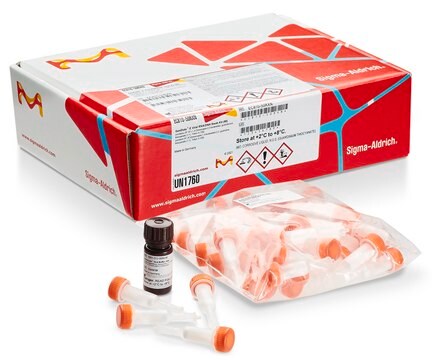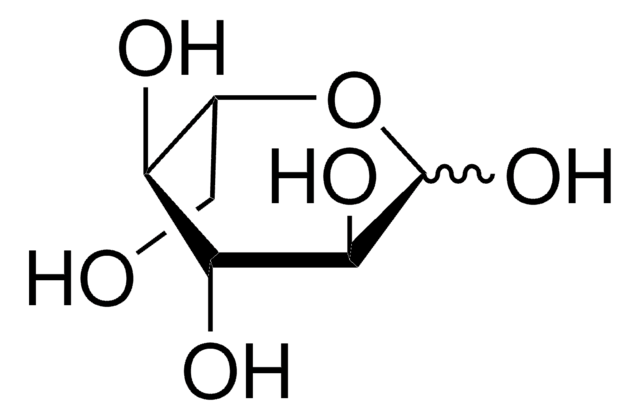G8644
D-(+)-Glucosa solution
100 g/L in H2O, sterile-filtered, BioXtra, suitable for cell culture
Sinónimos:
D-Glucopyranose
About This Item
Productos recomendados
sterility
sterile-filtered
Quality Level
product line
BioXtra
form
solution
concentration
100 g/L in H2O
technique(s)
cell culture | mammalian: suitable
impurities
endotoxin, tested
storage temp.
room temp
SMILES string
OC[C@H]1O[C@H](O)[C@H](O)[C@@H](O)[C@@H]1O
InChI
1S/C6H12O6/c7-1-2-3(8)4(9)5(10)6(11)12-2/h2-11H,1H2/t2-,3-,4+,5-,6+/m1/s1
¿Está buscando productos similares? Visita Guía de comparación de productos
1 of 4
Este artículo | G8769 | G7021 | G7528 |
|---|---|---|---|
| form solution | form solution | form powder | form powder |
| storage temp. room temp | storage temp. - | storage temp. room temp | storage temp. room temp |
| impurities endotoxin, tested | impurities endotoxin, tested | impurities - | impurities Insoluble matter, passes filter test |
| product line BioXtra | product line BioXtra | product line BioReagent | product line BioXtra |
| sterility sterile-filtered | sterility sterile-filtered | sterility - | sterility - |
General description
Application
Biochem/physiol Actions
Other Notes
This solution has been sterilized by filtration.
¿No encuentra el producto adecuado?
Pruebe nuestro Herramienta de selección de productos.
Storage Class
12 - Non Combustible Liquids
wgk_germany
nwg
flash_point_f
Not applicable
flash_point_c
Not applicable
Certificados de análisis (COA)
Busque Certificados de análisis (COA) introduciendo el número de lote del producto. Los números de lote se encuentran en la etiqueta del producto después de las palabras «Lot» o «Batch»
¿Necesita un COA de muestra?
Esto es un Certificado de análisis (COA) de muestra y es posible que no represente un lote de fabricación reciente para este producto específico.
¿Ya tiene este producto?
Encuentre la documentación para los productos que ha comprado recientemente en la Biblioteca de documentos.
Los clientes también vieron
Nuestro equipo de científicos tiene experiencia en todas las áreas de investigación: Ciencias de la vida, Ciencia de los materiales, Síntesis química, Cromatografía, Analítica y muchas otras.
Póngase en contacto con el Servicio técnico







